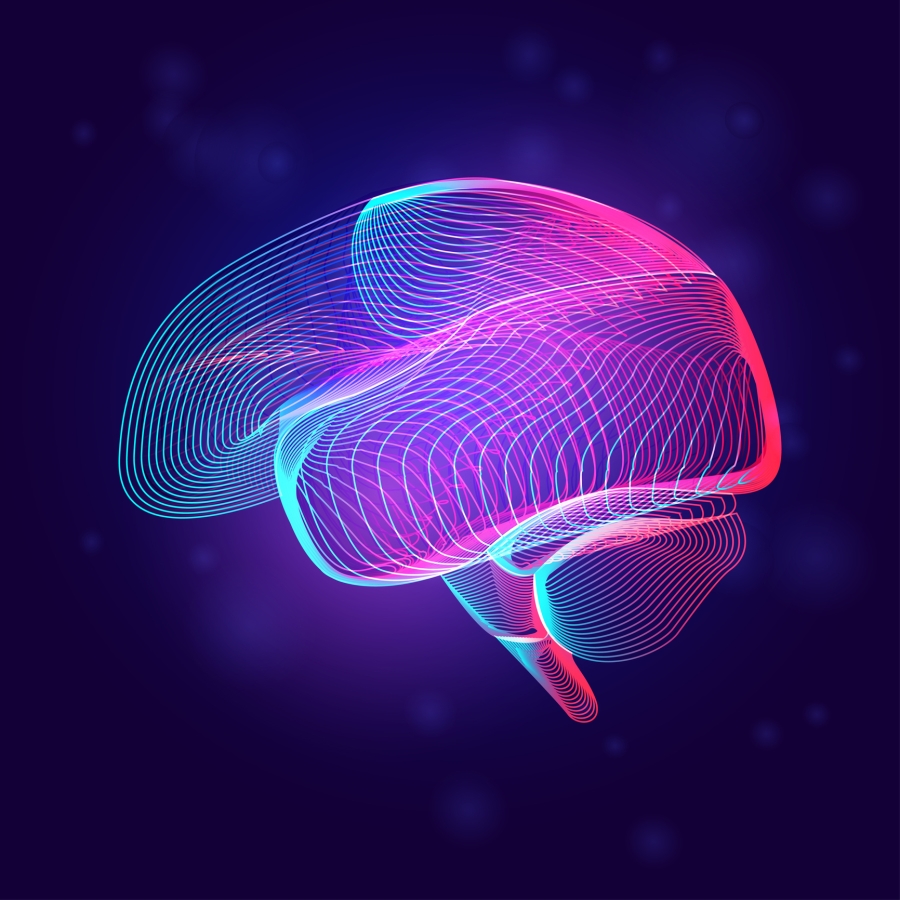If you want to optimize your mood and brain function, you need to pay attention to Brain-Derived Neurotrophic Factor (BDNF). It is a protein that helps your brain regrow. You can consider it your brain’s fountain of youth and happiness.
Unfortunately, the way we eat, live, and use our brains nowadays can lower it, contributing to mental health and cognitive problems.
In this article, we’ll cover the definition of BDNF, its roles, and the factors that lower it.
In the next article, Part 2, read about 19 ways to increase BDNF naturally.
What is BDNF?

BDNF is a small protein produced in the brain that stimulates the growth and survival of neurons. It’s also important for the proper development of the nervous system.
It stimulates neuroplasticity, which is the brain’s ability to adjust to change. Neuroplasticity is how your brain adapts, masters new skills, and stores information, which are all important for learning and memory.
What are the roles of BDNF?
Promoting neuronal growth and survival
BDNF stimulates neurons’ growth, generation, and survival. The development and preservation of neuronal networks depend on how many neurotrophins, including BDNF, your brain makes and releases.
Formation of synapses (synaptogenesis)
Synapses are the connections between neurons. They control the flow of information between neurons and their target cells. The formation of synapses is a crucial part of memory and learning. BDNF controls the number and arrangement of synapses.
Mental challenges strengthen the formation and preservation of synapses. These activities also increase BDNF in the brain, stimulating the formation of even more synapses.
Synaptic plasticity
Synaptic plasticity means changes in neuronal connections critical for learning and memory.
Neurotrophins encourage synaptic plasticity, help preserve cells, and assign cells their functions. BDNF is the most abundant neurotrophin in the brain, suggesting its powerful effects on synapses.
Memory

You need synaptic formation and plasticity to form memories and recall the information.
Also, your hippocampus is the memory center of your brain. Low BDNF in the hippocampus naturally affects memory and mood. Factors like aging, lack of physical activity, and brain inflammation correlate with low hippocampal BDNF, and thus memory loss.
Mood
Low BDNF can allow neurons in the hippocampus to die. In people with depression, these neuronal deaths and shrinkage of the hippocampus correlate with their depression severity. Not surprisingly, improving BDNF levels, such as with exercise, improves mood and relieves depression.
Peripheral nerve regeneration after injury
Although peripheral nerves (nerves located outside the brain and spinal cord) can spontaneously regenerate after injury, their complete recovery is unlikely. BDNF treatments have been successful in treating peripheral nerve regeneration in animal models, and there has been some success in human patients as well.
What are low BDNF symptoms?
Depression

If you have been struggling with depression or low mood, you could be experiencing the following changes in BDNF levels in the brain :
- Lower BDNF in your hippocampus (the brain’s memory center)
- Lower BDNF in your prefrontal cortex (logical thinking center)
- Higher BDNF in your nucleus accumbens (part of the reward pathways)
- Higher BDNF in your amygdala (the fear memory center).
These changes in BDNF levels may explain why you get brain fog, reduced logical reasoning, inability to experience reward or pleasure sensations, and chronic stress responses.
Dendrites are protrusions from neurons that connect with other neurons. Many depressed people have shortened dendritic trees. Some also have shrunken regions of the brain that are important for cognitive function, possibly due to reduced synapses.
Poor memory
A shrinking hippocampus and low BDNF levels explain why old age and reduced physical activity contribute to reduced memory loss
In a study of nursing home elderly adults, low BDNF levels predicted age-related memory impairment. Therefore, BDNF is a potential biomarker that may help detect age-related memory loss and dementia.
Brain fog or cognitive dysfunction
Brain fog and cognition dysfunction refer to decreased cognition, failure to focus or multitask, and forgetfulness. BDNF is crucial for neuroplasticity in the hippocampus, so it is necessary for learning and memory. If you struggle with brain fog, you may benefit from boosting your BDNF levels.
Now, BDNF isn’t always all good. One of the downsides of BDNF is that it can increase chronic pain sensitization.
Chronic pain

Chronic pain is pain that lasts longer than six months. The sensory neurons, known as nociceptors, alert us when we encounter painful stimuli. BDNF from sensory neurons can promote pain sensations.
BDNF is a pain modulator that sensitizes the brain to pain (central sensitization) The sensitization could explain why people feel pain for years even after their injuries have healed.
Factors that lower BDNF
Stress
Chronic stress reduces BDNF production, especially from your hippocampus. Yet, the BDNF is vital for stress recovery. Therefore, prolonged chronic stress reduces your neuronal plasticity and ability to adapt to change.
Apart from this, chronic stress increases your risk of developing anxiety, insomnia, and depression.
On the other hand, acute psychosocial stress raises your BDNF levels.

Inflammation
Inflammation in your body and brain reduces your BDNF levels and neuronal function. Therefore, it can cause brain fog and some neuronal death.
Poor blood sugar control (dysglycemia)
Poor blood sugar control and glucose metabolism are linked to low BDNF levels.
Hyperglycemia (high blood sugar) reduces the lifetime of neurons. It induces their suicide (apoptosis) and kills hippocampal neurons. Both type 1 and type 2 diabetic patients have reduced BDNF levels.
Social isolation
Social isolation can lower your BDNF levels and increase cortisol. Both can shrink your hippocampus. The stress levels during social isolation can also lower BDNF levels. All of these can impair learning and memory.
Conclusion
BDNF is your brain’s most abundant neurotrophin that you can target with nootropics and lifestyle. It helps with your brain function, along with memory and mood.
Low BDNF can contribute to memory loss, learning problems, brain fog, and mental health issues. Now that you know the symptoms of low BDNF and the lifestyle factors that lower it, you can tell if it’s a problem.
Fortunately, there are numerous ways to increase BDNF and boost your cognitive function naturally.
In part 2 of this 2-part article, we cover 19 ways to increase your BDNF levels.
References
- Bathina S, Das UN. Brain-derived neurotrophic factor and its clinical implications. Arch Med Sci. 2015;11(6):1164-1178.
- Puderbaugh M, Emmady. PD. Neuroplasticity. [Updated 2021 Jul 22]. In: StatPearls [Internet].Treasure Island (FL): StatPearls Publishing; Nih.gov. Published 2021. Accessed December 1, 2021. https://www.ncbi.nlm.nih.gov/books/NBK557811/
- Angelucci F, Brenè S, Mathé AA. BDNF in schizophrenia, depression and corresponding animal models. Mol Psychiatry. 2005;10(4):345-352.
- Caire MJ, Reddy V, M. V. Physiology, Synapse. [Updated 2021 Mar 29]. In: StatPearls [Internet]. Treasure Island (FL): StatPearls Publishing. Nih.gov. Published 2021. Accessed December 1, 2021. https://www.ncbi.nlm.nih.gov/books/NBK526047/
- Jevtovic-Todorovic V. Developmental synaptogenesis and general anesthesia: a kiss of death? Curr Pharm Des. 2012;18(38):6225-6231.
- Nelson TJ, Alkon DL. Molecular regulation of synaptogenesis during associative learning and memory. Brain Res. 2015;1621:239-251.
- Hua JY, Smith SJ. Neural activity and the dynamics of central nervous system development. Nat Neurosci. 2004;7(4):327-332.
- Nakayama K, Kiyosue K, Taguchi T. Diminished neuronal activity increases neuron-neuron connectivity underlying silent synapse formation and the rapid conversion of silent to functional synapses. J Neurosci. 2005;25(16):4040-4051.
- Lu B. BDNF and activity-dependent synaptic modulation. Learn Mem. 2003;10(2):86-98.
- Bramham CR, Messaoudi E. BDNF function in adult synaptic plasticity: the synaptic consolidation hypothesis. Prog Neurobiol. 2005;76(2):99-125.
- Ramirez A, Arbuckle MR. Synaptic plasticity: The role of learning and unlearning in addiction and beyond. Biol Psychiatry. 2016;80(9):e73-e75.
- Gómez-Palacio-Schjetnan A, Escobar ML. Neurotrophins and synaptic plasticity. Curr Top Behav Neurosci. 2013;15:117-136.
- Leal G, Bramham CR, Duarte CB. BDNF and hippocampal synaptic plasticity. Vitam Horm. 2017;104:153-195.
- Mizoguchi Y, Yao H, Imamura Y, Hashimoto M, Monji A. Lower brain-derived neurotrophic factor levels are associated with age-related memory impairment in community-dwelling older adults: the Sefuri study. Sci Rep. 2020;10(1):16442.
- Anand KS, Dhikav V. Hippocampus in health and disease: An overview. Ann Indian Acad Neurol. 2012;15(4):239-246.
- Martinowich K, Lu B. Interaction between BDNF and serotonin: role in mood disorders. Neuropsychopharmacology. 2008;33(1):73-83.
- Yu H, Chen Z-Y. The role of BDNF in depression on the basis of its location in the neural circuitry. Acta Pharmacol Sin. 2011;32(1):3-11.
- Tsai S-J, Hong C-J. Effect of brain-derived neurotrophic factor (BDNF) gene variants on the therapeutic response and the risk for mood disorders. Curr Pharmacogenomics Person Med. 2008;6(2):126-133.
- McGregor CE, English AW. The role of BDNF in peripheral nerve regeneration: Activity-dependent treatments and Val66Met. Front Cell Neurosci. 2018;12:522.
- Johnston D, Magee JC, Colbert CM, Cristie BR. Active properties of neuronal dendrites. Annu Rev Neurosci. 1996;19(1):165-186.
- Pittenger C, Duman RS. Stress, depression, and neuroplasticity: a convergence of mechanisms. Neuropsychopharmacology. 2008;33(1):88-109.
- Duman RS, Aghajanian GK. Synaptic dysfunction in depression: potential therapeutic targets. Science. 2012;338(6103):68-72.
- Theoharides TC, Stewart JM, Hatziagelaki E, Kolaitis G. Brain “fog,” inflammation and obesity: key aspects of neuropsychiatric disorders improved by luteolin. Front Neurosci. 2015;9:225.
- Russo CM, Brose WG. Chronic pain. Annu Rev Med. 1998;49(1):123-133.
- Dubin AE, Patapoutian A. Nociceptors: the sensors of the pain pathway. J Clin Invest. 2010;120(11):3760-3772.
- Sikandar S, Minett MS, Millet Q, et al. Brain-derived neurotrophic factor derived from sensory neurons plays a critical role in chronic pain. Brain. 2018;141(4):1028-1039.
- Nugraha B, Karst M, Engeli S, Gutenbrunner C. Brain-derived neurotrophic factor and exercise in fibromyalgia syndrome patients: a mini review. Rheumatol Int. 2012;32(9):2593-2599.
- Boudes M, Menigoz A. Non-neuronal BDNF, a key player in development of central sensitization and neuropathic pain: Journal Club. J Physiol. 2009;587(Pt 10):2111-2112.
- Latremoliere A, Woolf CJ. Central sensitization: a generator of pain hypersensitivity by central neural plasticity. J Pain. 2009;10(9):895-926.
- Ortiz JB, Mathewson CM, Hoffman AN, Hanavan PD, Terwilliger EF, Conrad CD. Hippocampal brain-derived neurotrophic factor mediates recovery from chronic stress-induced spatial reference memory deficits. Eur J Neurosci. 2014;40(9):3351-3362.
- Lima Giacobbo B, Doorduin J, Klein HC, Dierckx RAJO, Bromberg E, de Vries EFJ. Brain-derived neurotrophic factor in brain disorders: Focus on neuroinflammation. Mol Neurobiol. 2019;56(5):3295-3312.
- Rahmani M, Rahmani F, Rezaei N. The brain-derived neurotrophic factor: Missing link between sleep deprivation, insomnia, and depression. Neurochem Res. 2020;45(2):221-231.
- Linz R, Puhlmann LMC, Apostolakou F, et al. Acute psychosocial stress increases serum BDNF levels: an antagonistic relation to cortisol but no group differences after mental training. Neuropsychopharmacology. 2019;44(10):1797-1804.
- Krabbe KS, Nielsen AR, Krogh-Madsen R, et al. Brain-derived neurotrophic factor (BDNF) and type 2 diabetes. Diabetologia. 2007;50(2):431-438.
- Zhong Y, Zhu Y, He T, Li W, Li Q, Miao Y. Brain-derived neurotrophic factor inhibits hyperglycemia-induced apoptosis and downregulation of synaptic plasticity-related proteins in hippocampal neurons via the PI3K/Akt pathway. Int J Mol Med. 2019;43(1):294-304.
- Chen H-J, Lee Y-J, Huang C-C, Lin Y-F, Li S-T. Serum brain-derived neurotrophic factor and neurocognitive function in children with type 1 diabetes. J Formos Med Assoc. 2021;120(1 Pt 1):157-164.
- Offord C. Infographic: What Social Isolation Can Mean for the Brain. The-scientist.com. Published July 13, 2020. Accessed December 1, 2021. https://www.the-scientist.com/infographics/infographic-what-social-isolation-can-mean-for-the-brain-67706
- Weber J, Javelle F, Klein T, et al. Neurophysiological, neuropsychological, and cognitive effects of 30 days of isolation. Exp Brain Res. 2019;237(6):1563-1573.